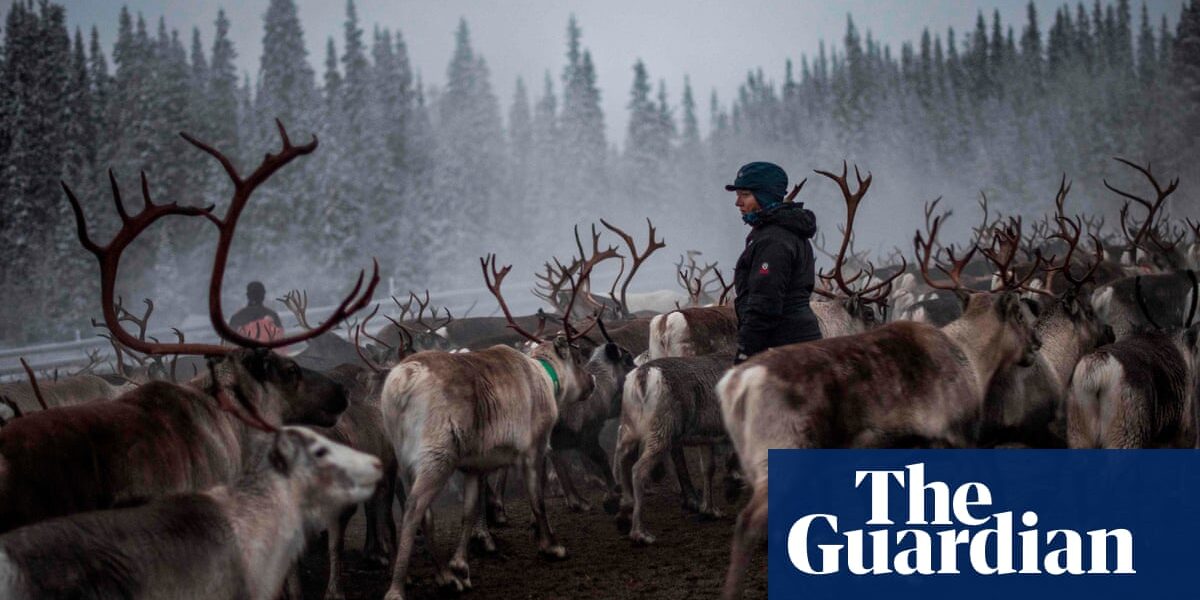
T
The August prize, a highly esteemed literary award in Sweden, was won by his ambitious and poetic novel. Translated into English by Saskia Vogel, the novel follows the journey of two Sami families over three generations during the 20th century. The Sami, who are the only Indigenous people in the EU, reside in territories above the Arctic Circle that are currently divided among Norway, Sweden, Finland, and Russia.
Ædnan evokes elements of grand tales and Nordic legends, yet maintains a modern and relatable quality. Rather than featuring deities or champions, a diverse group of storytellers collectively recount the ancestry and past of their community. The main protagonist of traditional literature is substituted with the very land itself, embodied by the Sami term Ædnan for land, ground, or earth.
Linnea Axelsson uses a free verse style without any punctuation. The stanzas are separated by dashes and the lines are typically short. This creates large areas of white space on each page, emphasizing the idea that this is a story of emptiness, brokenness, quietness, and erasure. The minimalistic structure mimics the environment depicted in the narrative: rugged, sparsely inhabited, and frequently covered in snow.
In 1913, the Sami people were preparing for their annual migration to their summer pastures in Norway. A newlywed couple, Ber-Joná and Ristin, were overjoyed to welcome twin boys, Aslat and Nila, into their family. At that time, words were inadequate to express the richness of their way of life. Instead, the Sami relied on singing to connect with the world around them. Ber-Joná proudly declares that her son embodies their entire heritage within his body.
The life is difficult. Nila is considered to be frail. “He will never be helpful in the reindeer forest.” Aslat gets hurt in an incident. Furthermore, the Norwegians are shutting the borders, causing the couple to be apart from each other. They are unable to go back to their summer grazing grounds. “Routes of migration and traditional songs had to be suppressed and forgotten.”
The story shifts to a family living in the 1950s in a flat in Porjus, Sweden where Ristin’s life came to an end. The mother, Lise, recounts the arrival of doctors to observe the Sami people, depicted as a “racial animal” in royal ink. Lise’s children are eventually sent to the Nomad Residential School, where they are forced to adapt.
The Sami people face additional dangers. A company is building a dam to generate hydroelectric power, resulting in flooding. As a result, many Sami are forced to take on menial jobs such as switchboard operator, cleaner, or cook, and very few are able to maintain their traditional reindeer herding lifestyle. However, by the 1970s, Lise’s children are starting to realize the devaluation and destruction of their traditional way of life.
Sandra, the daughter of Lise, is a bold and self-assured leader of the Sami people. She is determined to reunite every broken connection within their family lineage. As a result, the Sami community takes legal action against the Swedish government, seeking recognition of the intertwined nature of their histories.
It is challenging to advocate for the rights of the Sami community, as evidence mainly comes from verbal accounts, archaeological findings, and traditional knowledge. Many elderly Sami individuals are hesitant to discuss their history. Sandra raises the question, “How can a language be revived? Perhaps it begins with taking action.”
Source: theguardian.com



